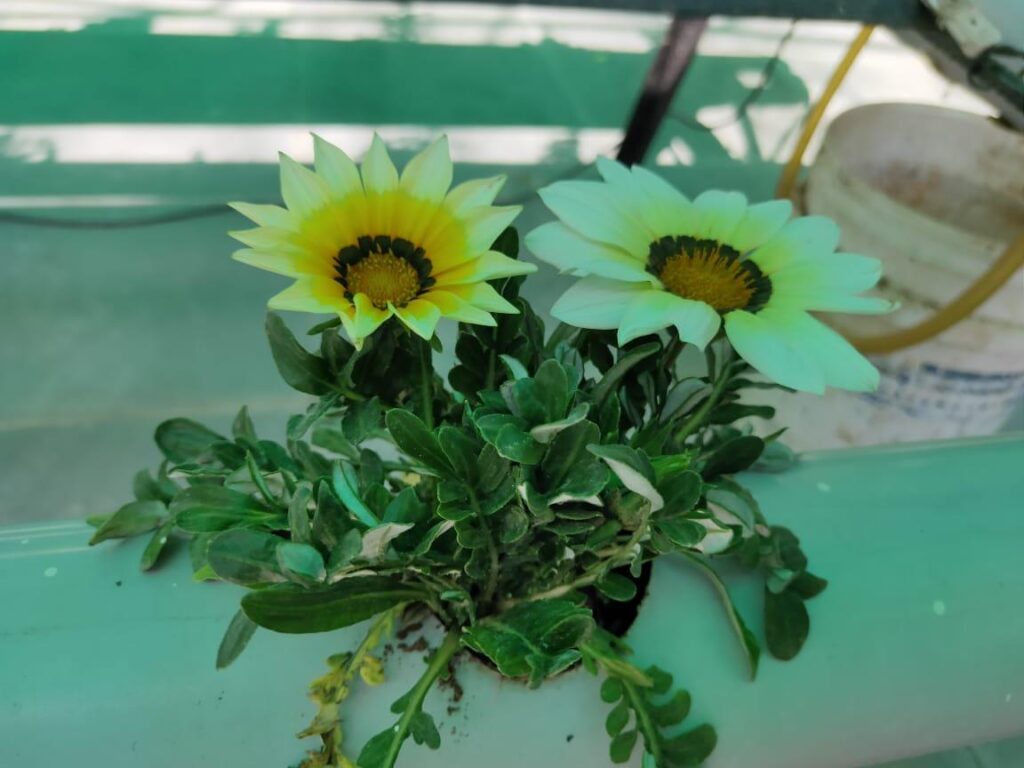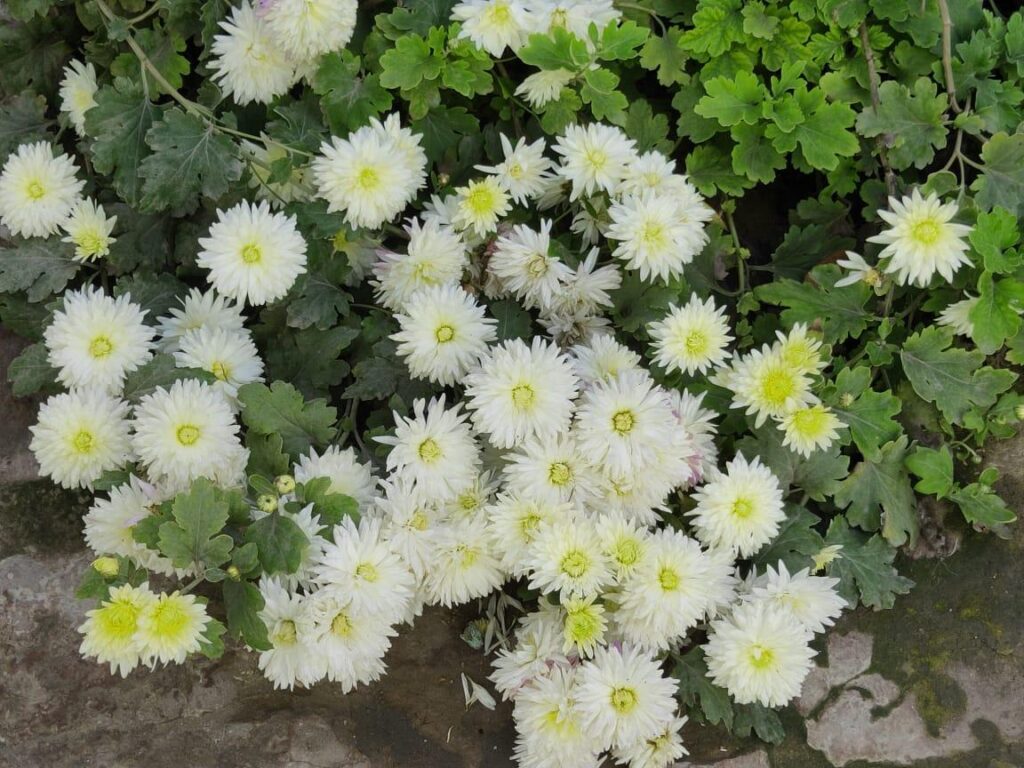Before starting with Class 6 Science Chapter 4 i.e. ‘Getting to Know Plants’, I am hoping that you have completed the 3rd chapter. If not, then you can go through its Notes and NCERT Exercise Solutions whose links have been provided below. ⤵️
Table of Content
Introduction
Before starting this chapter I have a small task for you my students. During your lunch recess period in your school, take a tour of your school’s gardens and parks and notice all the different varieties of plants that you can. Observe whether they all are similar in size, shape, colour, flowers, fruits, leaves, and buds that they bear are the same or different.
And one more thing I want you to do is try to observe as many different varieties of flowers as you can in your school, home village or city.
General Parts of a Plant
If you observe any plant, especially a large size plant you will observe they have more or less these common parts.
Plants are divided into two major parts.
- Root System (below the ground or below the growth medium).
- Shoot System (above the ground or above the growth medium).

Here are the various parts of a plant represented using a picture.

Herbs, Shrubs & Trees
Plants are divided into three categories based on morphological characters.
Morphological (plant’s bodily) characteristics that are the basis of this classification are:
- Height of the plant.
- Colour of the stem.
- Texture of the stem.
- Location from where branches start to grow. etc.
1. Herbs
Have you ever seen a mint plant or the weeds or the grass grown in your backyard or school gardens? Well, they all are classified as herbs.

Herbs are plants with short, green and tender stems. e.g. grass, mint, spinach, etc.
Herbs mainly don’t have many branches as such.
2. Shrubs
Have you ever seen the plants of roses, china roses, Bougainvillea and tulsi at your home or in some gardens? Well, such kinds of plants are classified as shrubs.

Shrubs are plants that are medium-sized and develop branching near the base of the stem which is hard but not very thick.
Shrubs are mainly medium-sized bushes.
e.g. tulsi, pomegranate, Bougainvillea, lemon, china rose, etc.
3. Trees
Have you ever seen the large-sized plants of Neem, shisham, mango, khejri, etc?
Well, such kinds of plants are classified as trees.

Trees are plants that are large-sized and develop branching in the upper part of the stem which is hardwood and thick.
Here is the simplified version of this classification:
| Plant Category | Plant Height | Stem Colour | Stem Texture | Stem Girth | Branches Emerge From |
| Herbs | Small | Green | Smooth | very thin | – |
| Shrubs | Medium | Light brown | Slightly rough | medium | the base of stem |
| Trees | Large | Dark Brown | Very rough due to the presence of bark | Thick | higher up at the stem |
Special Category of Plants
Other than the previous 3 categories of plants there exist two special categories of plants.
You definitely would have come across the plants belonging to these two categories. e.g. money plant, gourd, pumpkin, etc.
1. Creeper
The name ‘creeper’ itself defines the type of plants that belong to this category.
Creepers are plants that have very weak stems to keep them upright so their stem spreads on the surface.

e.g. watermelon, pumpkin, cucumber, strawberry, etc.
2. Climbers
The name ‘climbers’ itself defines the type of plants that belong to this category.
Climbers are more advanced creepers.

Climbers are plants that have a very weak stem to keep them upright but unlike the traditional creepers they don’t crawl on the surface instead they possess some modified spring-like structures called tendrils that help them to take support and climb up.
Stem & Branches
The stem is the part of the plant that is directly above the ground.
The Stem of a plant is divided into various branches and those branches bear leaves, fruits, flowers, buds, etc.
Activity
- Take an empty beaker and fill it 3/4 with water.
- Add a few drops of ink to it and stir it well.
- Take a newly cut branch of a money plant or any other herb, and dip it in the coloured water for some time.
- After some time you will observe that the ink colour has started to appear in the stem and it has risen above the level of the water.
- You can keep the branch of the money plant for some more time to see, how far will this dye or colour will travel through the branches.
Que. How come the colour reached so high up in the branch?

Functions of a Stem
- It helps in the upward movement of the water and nutrients from the roots to the various branches, leaves and other parts of the plant.
- It also transports the food from the leaves to the roots and other parts of the plant.
- It gives the structural support to the plant.
Leaf
Leaves are also known as the food factory of a plant because they are the site of food production in a plant.
My students go out in your nearby parks or gardens and look at the leaves of various plants and try to answer all these questions:
- Are all leaves the same in size?
- Are all leaves the same in colour?
- What are the various parts of a leaf that you can observe?
- How leaf is attached to a stem or a branch?
- Observe the pattern in the leaf

The Petiole is the part of the leaf by which it is attached to the stem or a branch.
Lamina or Leaf Blade is the broad green (mostly) part of the leaf.
You would have observed a fine network of thread-like structures (called veins) in the lamina of a leaf known as venation.
There is a prominent line/vein present in the middle of the lamina of a leaf called midrib.
If these veins form a thread-like network on both sides of the midrib it’s called reticulate venation.

But, if these veins run parallel to the midrib then it’s called parallel venation.

Why leaves are known as the food factory of a plant
Plants make their food by a process known as photosynthesis and that mainly takes place in the green part of the plants i.e. mainly in the leaves.

Photosynthesis is a process by which green parts of a plant prepare food by using water from the ground, carbon dioxide from the air and sunlight.
Oxygen is released in the atmosphere in the process of photosynthesis and excess food is stored in the form of starch in various parts of the plants.
Along with the release of oxygen into the air, some water vapours are also released into the atmosphere.
Transpiration is the release of water vapours into the atmosphere by leaves.
Roots
These are the underground parts of a plant.
Functions of the Roots
- They are mainly responsible for the uptake of water and nutrients from the soil. Then they provide water and various nutrients to various parts of the plant.
- They also help the plant to stand at their place in the soil. They act as an anchor.
Types of roots
Students, there is this small activity that you can perform at your home and it will help you to understand this chapter more thoroughly.
- Take two bowls or katories and label them as ‘A’ & ‘B’.
- Take some cotton wool and soak it in water and put it in the different bowls.
- Now take 5 black gram seeds and 5 maize seeds and put them in the different bowls for germination.
- Keep the cotton wet by sprinkling some water on it.
- Grow the plants for 2 weeks and then take them out of the cotton and look at their roots.
You will observe both black gram and maize have different kinds of roots.
1. Tap Root(s)
Black gram plants have this kind of roots.

There is one main root that is present and along with that, there are various smaller subroots or lateral or secondary roots are present.
Fibrous Roots
Maize plants have this kind of roots on them.

There is no main root present in fibrous roots, all roots seem similar and are of similar size.
Observe the venation of the plants with tap roots and fibrous roots, you will find a very amazing pattern.
‘All reticulate venation plants have tap roots whereas all parallel venation plants have fibrous roots’
Now you can tell whether a plant has a tap root system or a fibrous root system just by looking at its leaf’s venation. Quite magical isn’t it?
Do you know we eat the roots of various plants as food?
Some of the common examples of edible roots are carrots, radishes, sweet potatoes, tapioca, beets, turnips, onions, etc.
Flower
Flowers are the crown jewel of a plant varying in size, number, fragrance, colour, etc.
Here is a collection of flowers that I collected last year to soothe your eyes.









Take a China rose or Dhatura flower and observe its various parts. Try to observe the parts of a flower without plucking it and try to draw their rough structure in your notebook.
Here are the most prominent parts of a flower.

Sepals
Sepals are green or some other colour leaves-like structures present at the base of the flower.
Initially, they were the leafy cover of a flower in a bud state.
They protect the flower, provide it structural support and provide energy to the flower in the bud state by photosynthesis.
Petals
These are the colourful parts of a flower. Varying in number, shape, size, etc.
Generally, the number of sepals and petals are the same but it can differ in some plants.
They have a vital role in pollination which we will learn about in higher classes.
Stamen
When you observe inside the flower you will see some filamentous structures with a small hammer-like structure present at the top well those two structures together are known as stamen.
- Filament: is a thread or stalk-like structure that connects the anther to the flower.
- Anther: A small hammer-like structure that is present at the top of the filament and it carries the pollen grains.
Pistil or Carpel
This is the innermost part of a flower.
It mainly consists of 3 parts.
- Stigma: This is the topmost part of a pistil which is sticky and flat in nature.
- Style: This is the middle part of a pistil which is tubular in nature and connects the stigma with the ovary.
- Ovary: This part is present in the core of the flower. It ripes into a fruit.
Ovules
When you cut the ovaries to observe inside of it you will observe some beads-like structures present inside it.

Well, these small beads-like structures that are present inside an ovary are ovules and when ovules mature they form seeds.
We can summarise a flower using a mindmap

Conclusion
Plants are living just like you and me. So, stop harming them. Try your best to protect them as they are the little magicians of Mother Earth that are most important for our survival.
References & Credits
- Class 6 Science NCERT Textbook
- Image by brgfx on Freepik
- Image by M W from Pixabay
- Image by Joe from Pixabay
- https://www.urbanmali.com/blogs/wisdom/creepers-vs-climbers
- By Christopher Meloche, USDA ARS
- Image by Julia Schwab from Pixabay
- Image by Marc Pascual from Pixabay
- Image by Marc Pascual from Pixabay
- Image by brgfx on Freepik
- https://www.geeksforgeeks.org/tap-root-diagram/
- Image by brgfx on Freepik
- https://twitter.com/exploratorium
Thank You for Choosing Sciक्षक ❤️

